Google Performance Max (PMax) is the latest advertising solution offered by the Google Ads advertising platform, which is being adopted by e-commerce businesses globally. The shift towards Performance Max may seem daunting, but the learning curve is worth the effort. By embracing this new advertising system, businesses can achieve a good reach online with little effort in getting started.
With this in mind, PMax requires a different approach than standard Google ad campaigns. In this blog post, we'll talk about how e-commerce advertisers should approach and formulate a strategy applicable to Performance Max.
What Is Performance Max For Retail
Google Performance Max is a powerful advertising system that allows e-commerce businesses to access all of Google's ad inventory in one campaign. This includes YouTube, display, search, shopping, and more, making it an all-in-one solution for online retailers, thus offering unified buying for all Google channel placements.
One of the most significant advantages of using Performance Max is the automatic optimisation of ad bids, budget allocation, ad creative and placement. And, with the inclusion of a Google Merchant product feed, it brings in Shopping ads as a critical makeup of advertising channels, making this the replacement for what was Google Smart Shopping campaigns.
In summary, it offers a plug-and-play e-commerce advertising solution, which covers all ad inventory from a single campaign, making it an ideal choice for online retail businesses looking to boost their sales and visibility. Read our Complete Beginner's Guide to Google Performance Max for a broader overview of what Performance Max is and how it works.
Full-Funnel Advertising Of Your Products
For online retailers, customer acquisition is the ultimate goal of digital marketing. However, the challenge lies in reaching the right customer at the right moment during their unique online journey. With consumers engaging in different online activities such as watching YouTube, using Gmail or browsing the web and having varying levels of exposure to various campaigns, Google refers to this as the "messy middle." A difficult journey to decode and formulate any applicable advertising strategy.
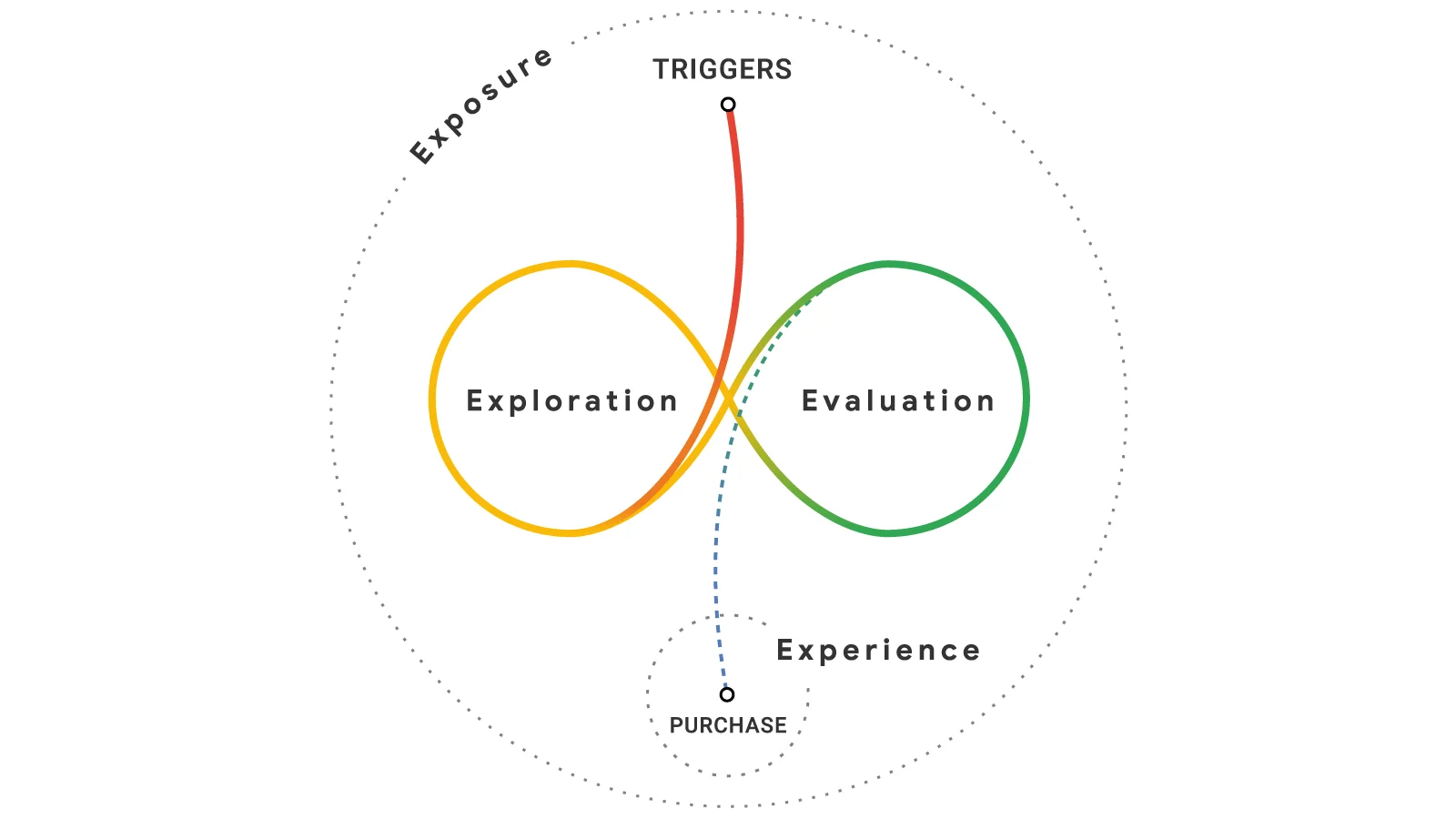 To read more about this report created by Google, you can read their article here: How people decide what to buy lies in the "messy middle" of the purchase journey.
To read more about this report created by Google, you can read their article here: How people decide what to buy lies in the "messy middle" of the purchase journey.
Google Performance Max addresses this challenge by appearing at relevant moments during customer journeys. By allowing retailers to define specific conversion goals, PMax uses machine learning to identify the optimal ad for each consumer and optimise ad delivery. This could take the shape of video, shopping, display, or any other type of ad in its arsenal.
By meeting consumers during their shopping journeys, retailers can improve their chances of reaching and converting them by showing up at the right moments.
Is Google Ads Performance Max Right For My E-Commerce Business
There is a mix of opinions around Google Ads Performance Max, and we would say it depends on several factors unique to your business. There is no question that PMax is designed to meet the needs of a retail business, including the retail-specific shopping ad format and the value-based bidding strategy.
However, as PMax uses machine learning, data is critical to optimising for desired goals. Therefore an online store with limited inventory and website traffic may not offer PMax enough data to get momentum and operate efficiently. Even so, our position would always be that an e-commerce business should at least test it. And the strategy formulation below may help you decide if PMax is the right option.
PMax is also very automated, using a 'black box' model, so you won't get anywhere near the insights you'd have when using Google Search Ad, Standard Shopping or Display campaigns. You will also have less control over bids and search query targeting, but if resources are limited, and maybe this is your first dive into Google Ads, the automation features may be just what you need to get off the ground. One of the key considerations in determining if Google Ads Performance Max aligns with your e-commerce goals is understanding how it compares to other campaign types. Our dedicated post, Performance Max vs. Standard Shopping: Unveiling the Differences, extensively covered this topic.
How To Create A Performance Max Campaign Strategy For E-commerce
Google suggests using a single campaign for any e-commerce ad strategy, with all data combined into one place and all products and ads in one asset group. We get why it might approach it this way, possibly to keep things easy to set up while maintaining data combined for improved machine learning.
We would argue that this depends on each business's objectives and product catalogue, and our experience has proven otherwise regarding how you approach a PMax campaign. For small catalogues, a single campaign might be the only option. Still, for more extensive catalogues, this approach can be problematic in meeting specific objectives which might apply to different products to maintain profitability, which is critical in an overall marketing strategy. In this case, one size fits all will not work.
Following the process and considerations discussed below, you should be well on your way to getting a PMax strategy in place that's appropriate for your retail business.
Start With Your Retail Business Goals
The first point to remember this process is that PMax is all about audiences. This may be more difficult for a seasoned Google advertiser who has always approached campaigns from a keyword and searcher intent mindset. At the end will likely be a significant contributor to overall traffic in PMax campaigns, but when it comes to the levers you can pull in PMax, it's all about audiences.
So as a first step, think about the audiences you want to appeal to. Not what they are likely to search for online, but, Who are they? What problems are they trying to solve? Are they at any significant stage of life or going through an ordinary life event? What other events may tie in with these? How old are they? What are their interests? The more data you have on this, the better.
Armed with the above, you will likely be able to categorise your audiences and identify which of your products meet their needs. Would all your products appeal to them? Or is there a split between the cyou've come up with above? Maybe even an overlap?
Finally, how does this fit with your business? Are these audiences likely to become new customers, are they past customers, or both? What's the associated lifetime value of each customer from their first purchase with you?
This exercise should help you map out who you want to advertise to, their value to your business and which products would interest them.interest knowledge, you stand a better chance of formulating a strategy for PMax.

Free Report
Spot Errors, See Strategies,
Our Free Report Reveals Key E-Commerce Fixes.
Book Your Call
Setting Goals For New Customer Acquisition
From the above exercise, you should have a good idea of which products from your catalogue will likely appeal to existing customers and, or new customers. For example, in the acquisiacquiringers only, you'll know which products to use in this strategy.
Alternatively, you may be interested in everyone, but place more value on new customers when they purchase certain products, so you'd be willing to pay more for each sale in these cases.
Performance Max allows you to pursue sales from everyone, new customers only, or both, which you can specify at a campaign level. You may therefore choose to run several campaigns, some pursuing all customers and other set to target new customers only. So already, you can see how these goals alone might influence your campaign structures.
The option for setting how you want PMax to pursue new and existing customers is in the 'Settings' of Performance Max campaigns under the customer acquisition heading.
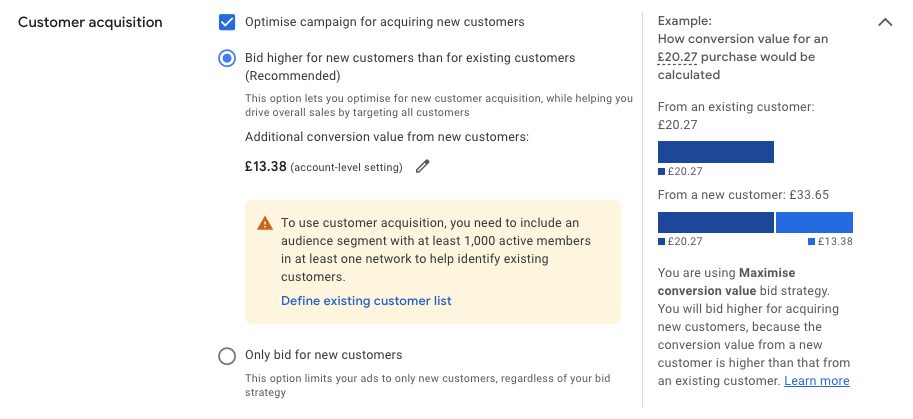
When your strategy differs for acquiring new customers, you'll need to educate PMax on who your existing customers are by providing it with an audience list from the Audience Manager. Depending on your campaign settings, PMax will then use this data to either avoid serving ads to your existing customers or adjust its bidding for new customers while also learning from the profile of these past buyers to help it to identify users who look 'similar', and pursue these for new sales.
Additionally, you can specify certain criteria that you'd want PMax to meet when paying more for a customer from a certain audience. Within the campaign settings, you can add value rules to indicate the potential value of a customer from a certain audience segment, a location or a combination of the two that would be more valuable to the business.
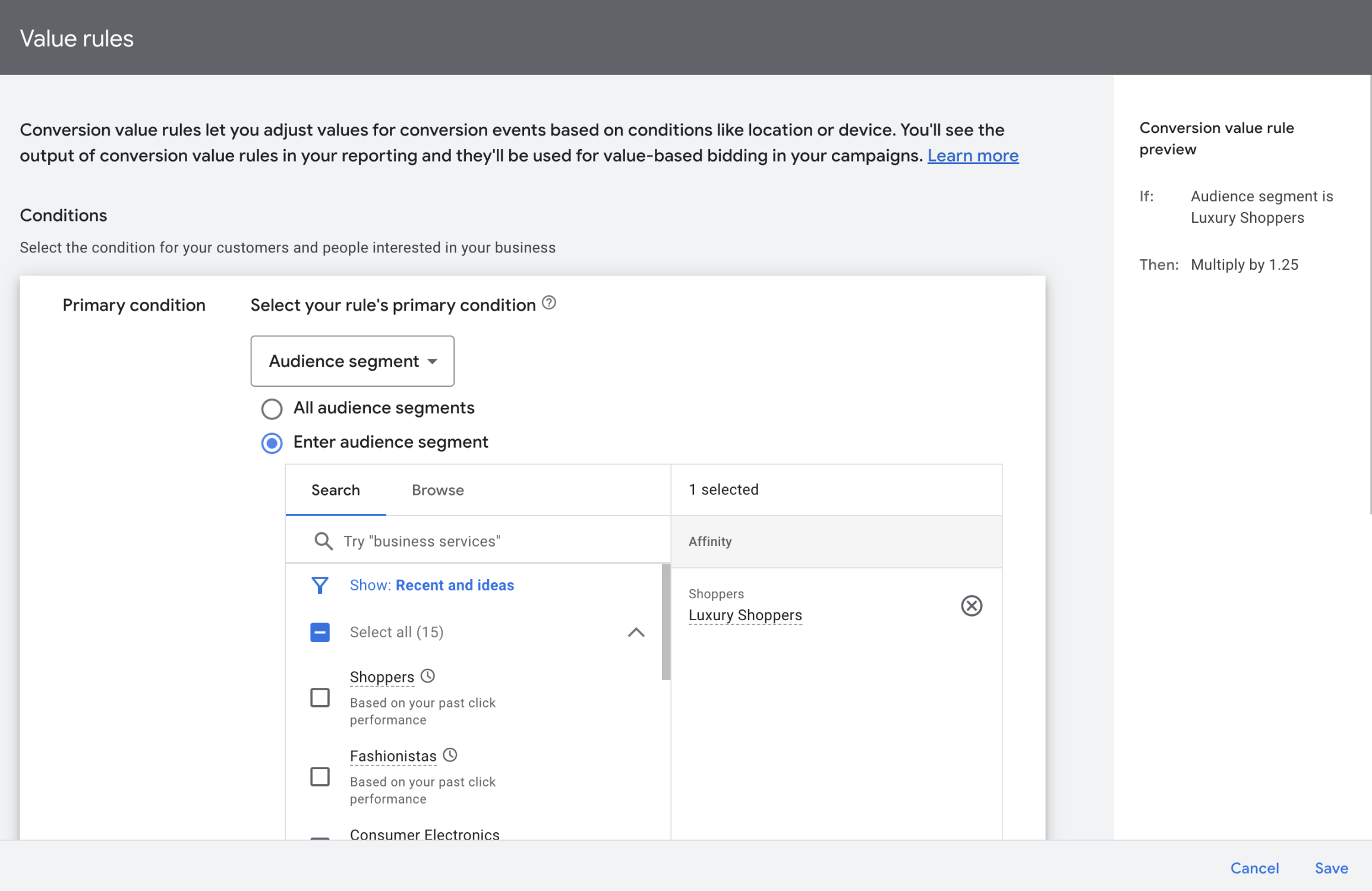
For example, if you tell PMax that a customer has an increased value over other sales by 25% when they meet certain audience criteria, it will adjust its bidding strategy relative to order values. This will essentially lower the ROAS in terms of revenue against cost and allow it to pursue these audiences more aggressively.
A word of warning, if you are asking PMax to pursue new customers only, you will need to adjust your expectations accordingly. A campaign focused on new customer acquisition will not perform like a campaign focusing on bottom-of-funnel conversions. This may come down to lower volumes, targeting a colder audience or a combination of these.
Educate The Machine With Bottom Of Funnel Sales
With its reliance on Machine Learning to optimise ad delivery, Performance Max requires lots of data. As digital marketers, we rely heavily on data with enough statistical significance to make informed decisions on placing optimisation efforts. Without enough sales and traffic data, it's difficult to identify and implement changes that will have any favourable impact, and for Performance Max, it's no different.
Naturally, PMax will gravitate to traffic that is most likely to convert, so it will go for the bottom-of-funnel traffic first. This is usually won through Shopping Ads. In our experience, traffic in most PMax for retail campaigns is heavily biased toward shopping ads. The high purchase intent of this traffic offers the highest chance of conversion, so PMax will tap into the search intent of the audiences of this ad format first.
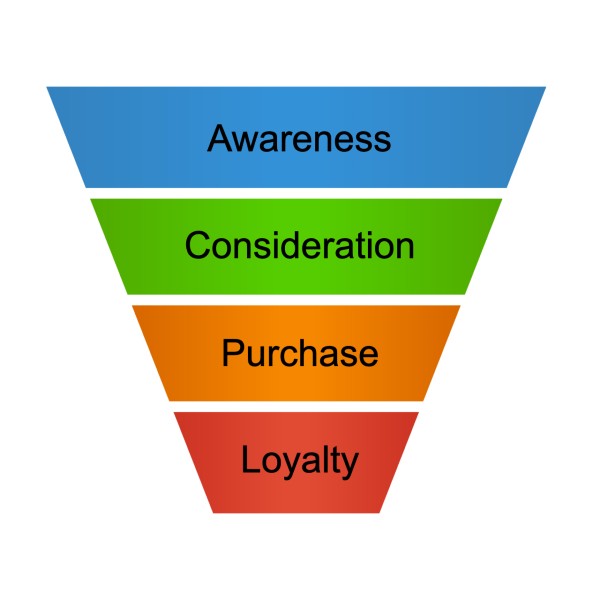 Shopping Ads is a must in e-commerce PMax campaigns, so connecting your ads account with a Merchant Centre account is paramount. Ideally, this would be populated with a product feed which is automated and updated dynamically by your website to avoid ads serving when products are out of stock or when prices are changed, reflecting your inventory in real-time.
Shopping Ads is a must in e-commerce PMax campaigns, so connecting your ads account with a Merchant Centre account is paramount. Ideally, this would be populated with a product feed which is automated and updated dynamically by your website to avoid ads serving when products are out of stock or when prices are changed, reflecting your inventory in real-time.
Most of the popular e-commerce platforms offer some tools for easy integration with Google Merchant Centre. Shopify, for example, offers the Shopify Google Channel App, which provides a very easy way to synchronise your products with Merchant Centre. Other platforms have several plugins available from different developers, providing popular options for business owners operating WooCommerce or Magento stores, to name a few.

Getting Started With
Performance Max
Download Our Step-by-step guide to getting started with Performance Max Shopping Campaigns for your Shopify Store
GET YOUR FREE EBOOKFREE EBOOK
Recommendations For A Performance Max Campaign Structure
The structure of your PMax campaigns will very much depend on your business objectives, as we have already discussed. Having carried out the exercises above to identify your audiences and their needs, you should now be able to identify which of your products appeal to each of these groups and how you might want to cost out your sale acquisition. Is your goal margin or revenue, and does this perhaps apply differently across your catalogue? With this decided, you can now begin considering how you'd break up your product catalogue into different campaigns.
PMax campaigns are goal-based, so bidding strategies are set around your goals, and structuring your campaigns mostly comes down to control of budgets and bidding strategy. Ad creative assets and audience signals are set at the asset group level, which we will come to shortly.
We have some guidance on structuring campaigns discussed in another blog post, "How To Structure Your Performance Max Campaigns" which should offer an overview of how you could approach this. For this article, we'll discuss what you should consider from a business goal point of view and how this may adapt based on performance.
Catalogue Size
If you are promoting fewer than 10 products, unless how you want to budget or bid is very different for each, you'll most likely be best placing all of these within a single campaign. However, your campaign structure will likely become more sophisticated with larger catalogues due to your budgeting and acquisition costs.
Points discussed so far should get you in the direction of splitting out your catalogue into a handful of campaigns. There may be asset group segmentation within each,, but that will depend heavily on the products and target audiences. Ultimately, your campaigns will need structuring around your business objectives and margins while also considering themes.
Bid Strategy
Cost per sale and/or desired return on ad spend (ROAS) for each product group will also influence your structure. You may be happy with a single target set for all products or perhaps a lower return for high-stock products and a higher return for low-stock high-margin products. There may be products in your catalogue that are lost leaders used to acquire new customers with the prospects of later up-sells, and equally, products which sell best to past customers who know and trust your brand.
If you are new to PMax, you may need to begin with a bidding strategy that doesn't quite meet your long-term goals, with more relaxed cost or return constraints. This will allow PMax to run more aggressively initially and gather important data about traffic and sales. It will then learn about what to sell, who to sell to, when, where and how to sell, and optimising to meet your initial goals. Upon achieving this, you can begin tightening your targets and moving towards meeting your longer-term goals.
Budgeting
A carefully thought out plan will have you better placed for an optimised budget allocation. This may come down to priority. For example, if part of your catalogue offers the most value to your business, this will take priority. Segmenting these products in a priority campaign will allow you to maximise your reach for them by allocating the budget they need, with a surplus used for secondary products only as it's available.
Remember that you can't always rely on the bidding strategy to meet your goals alone. Sometimes when Google PMax can't meet the objective, perhaps when your goals are set too high, it won't limit the spending in the campaign. So in these cases, you may need to intervene in your budget allocation and product inclusion.
We'd say experiment with as much budget as you can. Performance Max will benefit from having more to work with, chasing more traffic, driving more sales and getting the required volume to identify patterns and apply appropriate optimisations in the future.
Low Traffic & New Products
Low traffic and new products are also a consideration. With low traffic and, therefore, little in the way of sales data, PMax may find it difficult to optimise for specific sales targets. In this case, a low budget with a more aggressive bid strategy might be the way to go. This would take the form of less ambitious cost per sale or ROAS targets, maybe even maximise conversions to give such products a chance to prove themselves to PMax and give it some data to work with.
The same can be said for new products you introduce to the catalogue. PMax tends to identify what sells, then figures out where to sell it, how to sell it, when and who to sell it to, and then leans on this product to achieve your goals. And in situations where a PMax campaign is meeting your goals, it may be reluctant to spend your budget outside of what's working. In these cases, you'll need to intervene with a more aggressive bid strategy.
Build Asset Groups To Communicate With Your Audiences
Asset groups are about who you are communicating with, and what you want to say. This is where the theme of your products carries more weight, so it's in Asset Groups where you consider which products and what messaging you want to serve to whom.
When building out your Asset Groups, a structure to start with might be based on your website categorisation. However, it will depend on who you are talking to for each product split and how many asset groups you might need. Let's say you are selling a product that has both an emotional and utilitarian property. In one case, an audience will purchase it to meet a need. For another, it may be an emotionally desired purchase under the right circumstances, in which case your ad copy would need to be tailored to communicate effectively in both these situations while promoting the same section of your website.
This is one of the features of Performance Max, it's all about audiences, and you can therefore tailor your ad copy to communicate effectively with each audience. Here are some things to consider when breaking out your asset groups and creating your ad creative within each campaign.
Product & Website Coverage
What products will you include in the campaign, and how would you divide these up at the asset group level? Does your product catalogue typically appeal to all your audiences, or is a more granular approach needed?
This will become apparent when you add creative assets to your asset groups to make up your ads. For example, for Women's road cycling apparel, you won't want ad copy being served that talks about Men's MTB shorts. So think carefully about your messaging, which will help you create your asset group structure.
How asset groups target users will also come down to the URLs you specify in the ad targeting. Which leads us to Landing Pages.
Landing Pages
As you build out your ad assets, you must specify which pages on your website you want PMax to consider as appropriate content. PMax will use what you specify as a potential landing page and where it gathers keywords for serving search ads. (For seasoned Google Advertisers, think Dynamic Search Ad targets). Google will crawl these pages to establish what the pages are about and the search queries that may be satisfied by your ads in the search results. So again, think about website categorisation vs applicable ad copy.
Using the Google keyword planner is one way to see how Google views your website. Rather than specifying keywords, choose to start with a web page and use the URL of the category you want to promote. Also, ask Google to crawl only the page you provide, rather than the whole website.
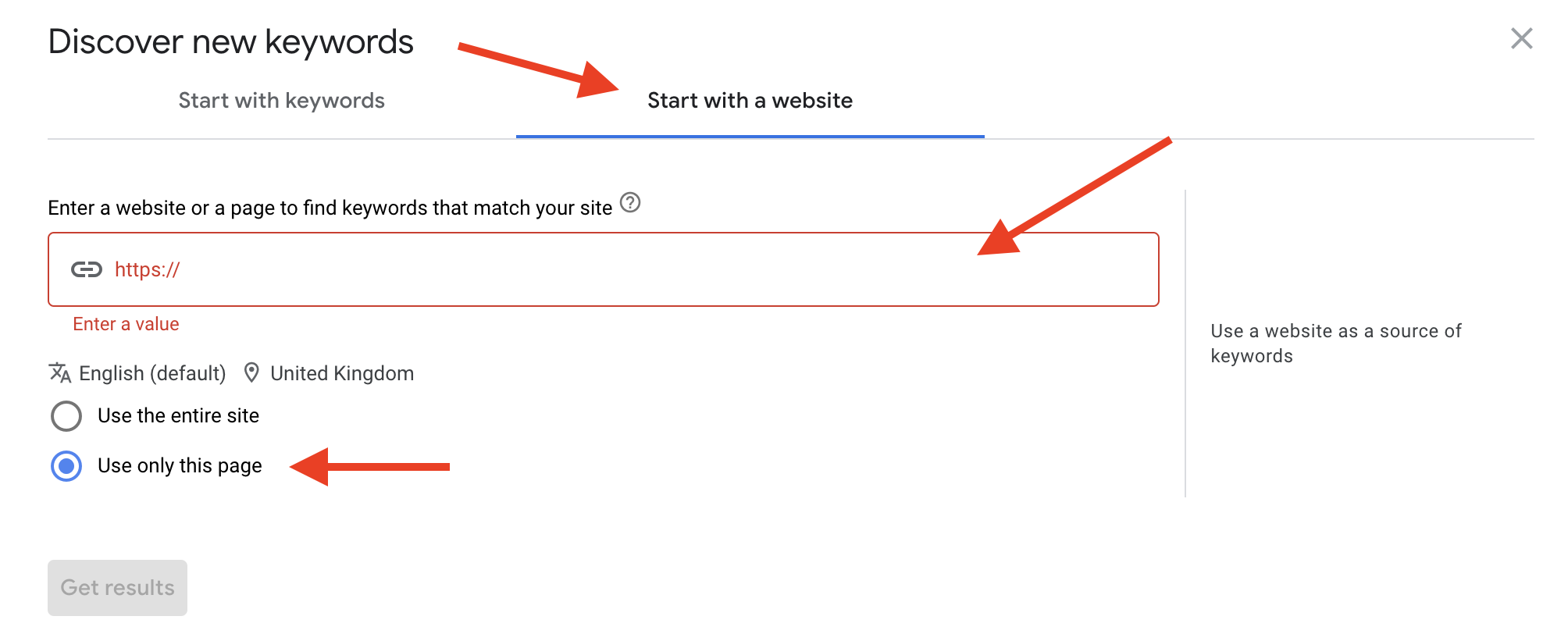
Google will then display search volumes for keywords it sees are relevant to your webpage. If you see a list of relevant keywords and would be an ideal theme on which to serve ads, you're all good. If you think any keywords are missing, you should review your website page's content and ensure the missing keywords are included in your content.
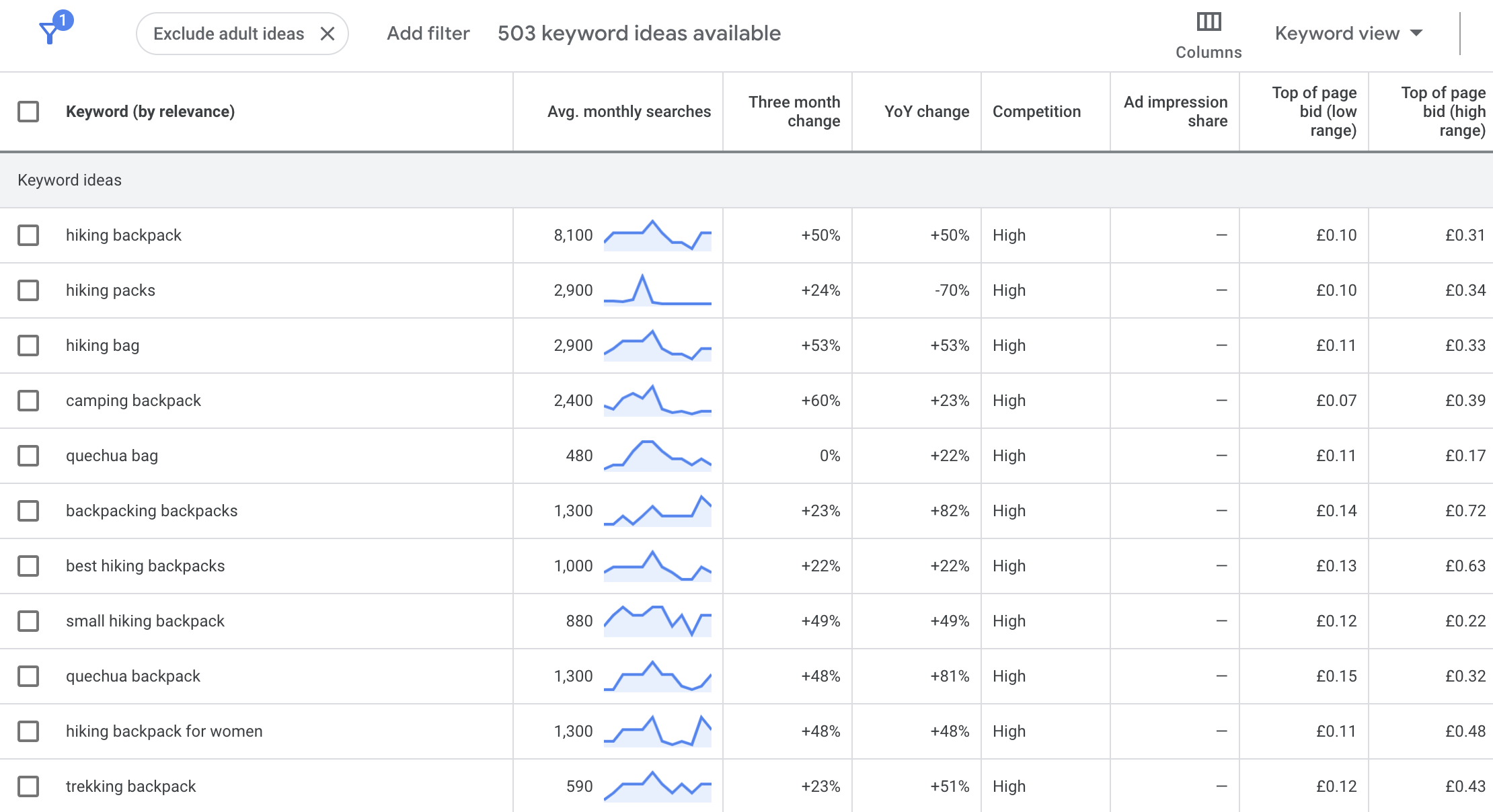
The above screenshot is a good example of keywords pulled from the content of a keyword-rich page. In this case, a sports equipment and clothing retailer for the category of 'hiking backpacks'. If, however, the keywords returned are off-theme, then either the content of your website is not up to scratch, or Google cannot crawl and index your website properly, indicating there may be one or more technical barriers in place.
Audiences
We'll cover Audience Signals in a little more detail shortly, but to break out Asset Groups, you have to think about whether your ad messaging would need tailoring to one audience vs another for the pages you plan to target in an asset group. If the answer is yes, you'd need to consider two, or maybe more asset groups, depending on the audiences, for the same part of your product catalogue. We've already pointed out the more obvious form of this for different products vs ad copy, but what about audiences for the same product?
Let's say you have a product that would appeal to both parents and grandparents. In one situation, the product may be considered more on features and how it meets a core need. While in the other scenario, it may be purchased as a gift, in which case, the motivations and key points in the ad messaging may need to be different.
Audience Signals
If you need to understand how Audience Signals work in PMax, then check out our blog post 'Maximise Your Reach With Audience Signals In Google Performance Max Campaigns'.
First and foremost, you should leverage your first-party data if possible. Your past customers are a good start, so if you've been selling online for a while and have a list of converting users in your audience manager, use this in your core asset groups. This aims to educate PMax on who your customers are and their interests and online habits. If you don't have this, customer match is a great option and serves the same purpose again. You can get granular here if you have the numbers, but bear in mind you need a large segment to offer significance of data points for Google to learn from.
Expansion beyond your first-party data might be interests and detailed demographics. Any you come up with here should be separate from your core asset groups and may differ in the products you decide to promote in each, along with the ad messaging run with. All the considerations applied as discussed up to this point should make this quite easy.
Custom segments, such as keyword targeting or audience combinations, can be used to go further. Again, the approach to this is the same as above, consider who you are appealing to, what products would spark their interest and what messaging you should use.
Audience signals can be the same in many asset groups or varied in the case of needing to tailor ad copy for diverging personas. Remember that audience signals in PMax are not a hard target but a means of steering the machine in the right direction. The tailoring of audiences to served products, landing pages and ad copy is something that PMax will then test and learn from, and upon the success of this, may well expand into other audiences you might not have considered.
Listing Groups
We've already established that Shopping Ads are important in Performance Max for Retail campaigns. And how you break these up will come down to campaign-level objectives and audience signals. However, it's worth noting that your listing groups (ads created by your product feed for shopping ads) should not be duplicated in several asset groups (or campaigns, for that matter). The ads created for these are from your product feed and, therefore cannot be tailored to different audiences anyway. It's fine to break your catalogue up into different campaigns and asset groups but don't duplicate them, and products should be unique to each.
Seasonality
Finally, something else which might influence how you divide up your asset groups will be product seasonality. A portion of your catalogue might only sell during the summer months and another portion you rely on in the winter months. In this case, ad copy will vary based on product, audience and season. With this in mind, it might be wise to break out asset groups by season so that you can bring these on and offline when necessary with the ability to tailor your messaging accordingly.
Budgeting
This comes up again, but this time in the context of Asset Groups. You'll need to remember that for every asset group you create, you are potentially creating another source/place in which PMax will look for ad clicks and sales. And like when allocating budgets to campaigns, you don't want to spread a campaign's budget too thinly across too many asset groups. As doing so will prevent PMax from being able to test all your asset groups. Keeping it simple in the case of small catalogues and/or budgets would be the way to go initially, with expansion considered later on.
The above points should give you a grasp of asset groups which essentially comes down to ad messaging. How you want to present and promote different products to different audiences with different purchase motivations. With a granular asset group structure, you can be assured that ad copy is tailored to meet these requirements, with the right selling points for product-aware consumers and solutions addressed for problem-aware consumers.
Strategies To Control Brand Searches In Performance Max
As we know, PMax will look to bottom-of-funnel sales first to learn what sells and how to sell it, then will look further up the funnel to scale into colder audiences. So naturally, it's going to gravitate to the lowest hanging fruit in the form of search queries in the search engines for your brand. Be this brand of your product or your business name.
We would suggest that this is fine in the early days of new campaigns enabling the algorithms to learn, but this would ideally need some control for the long term. Brand searches are likely to yield a very high return on ad spend, and this extreme high may offset the lower yields in cases of new customer acquisition when looking further up in the funnel. The result is paying way too much for new sales, with the figures are skewed by the extremely high yield from brand search traffic that you may have reached anyway via direct or your organic search presence.
An exception to this might be when heavy competitor ad activity covers your brand keywords, therefore outranking you in the search results. In this case, some coverage of your brand keywords is required as a defence strategy.
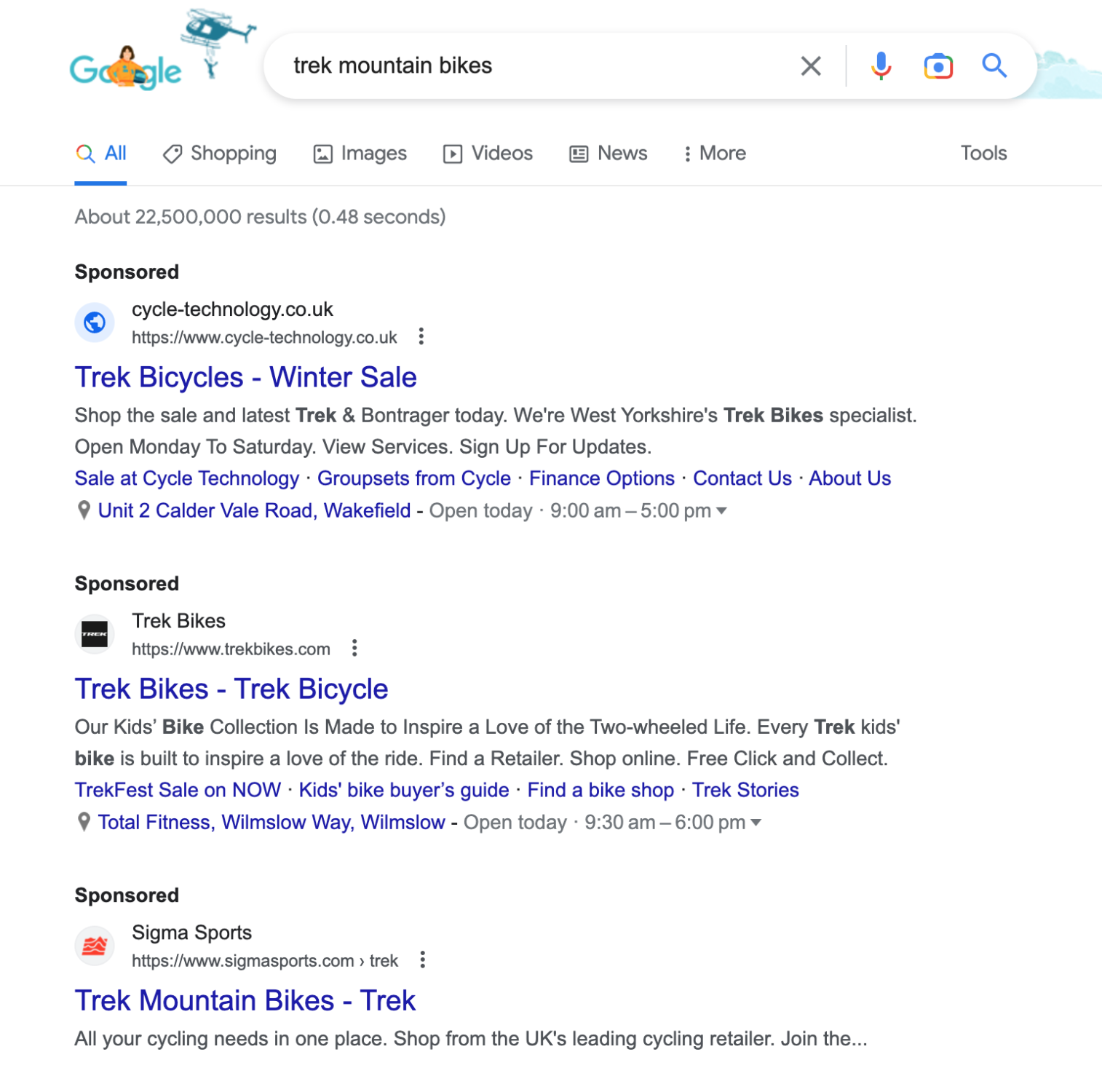
There are a few approaches you can take to either limit or regain some control over brand search queries being targeted by Performance Max;
1. Avoid your website home page in your URL targeting - Instead, focus on your product category and product detail pages. This may not avoid brand targeting completely, but it will reduce the weight Google may put on them. This will require careful URL selection in your asset groups, with either Final URL expansion off or adding excluded URLs in your campaign settings.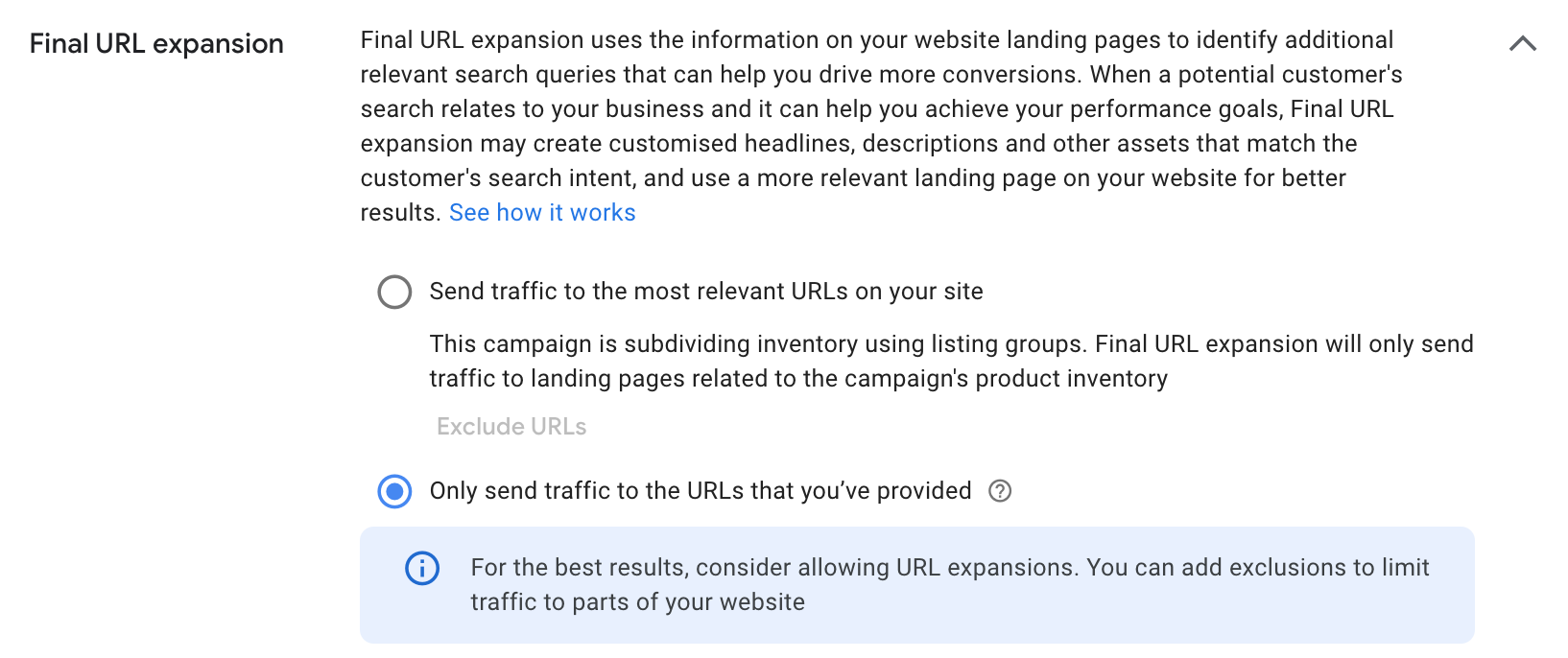
2. Account level negative keywords - PMax doesn't have the feature of adding negative keywords at the campaign level yet. However, at the time of writing, you can add negative keywords at an account level. The drawback is that these negative keywords will be excluded from every campaign in your ads account, so it removes the option of running campaigns targeting brand keywords entirely.
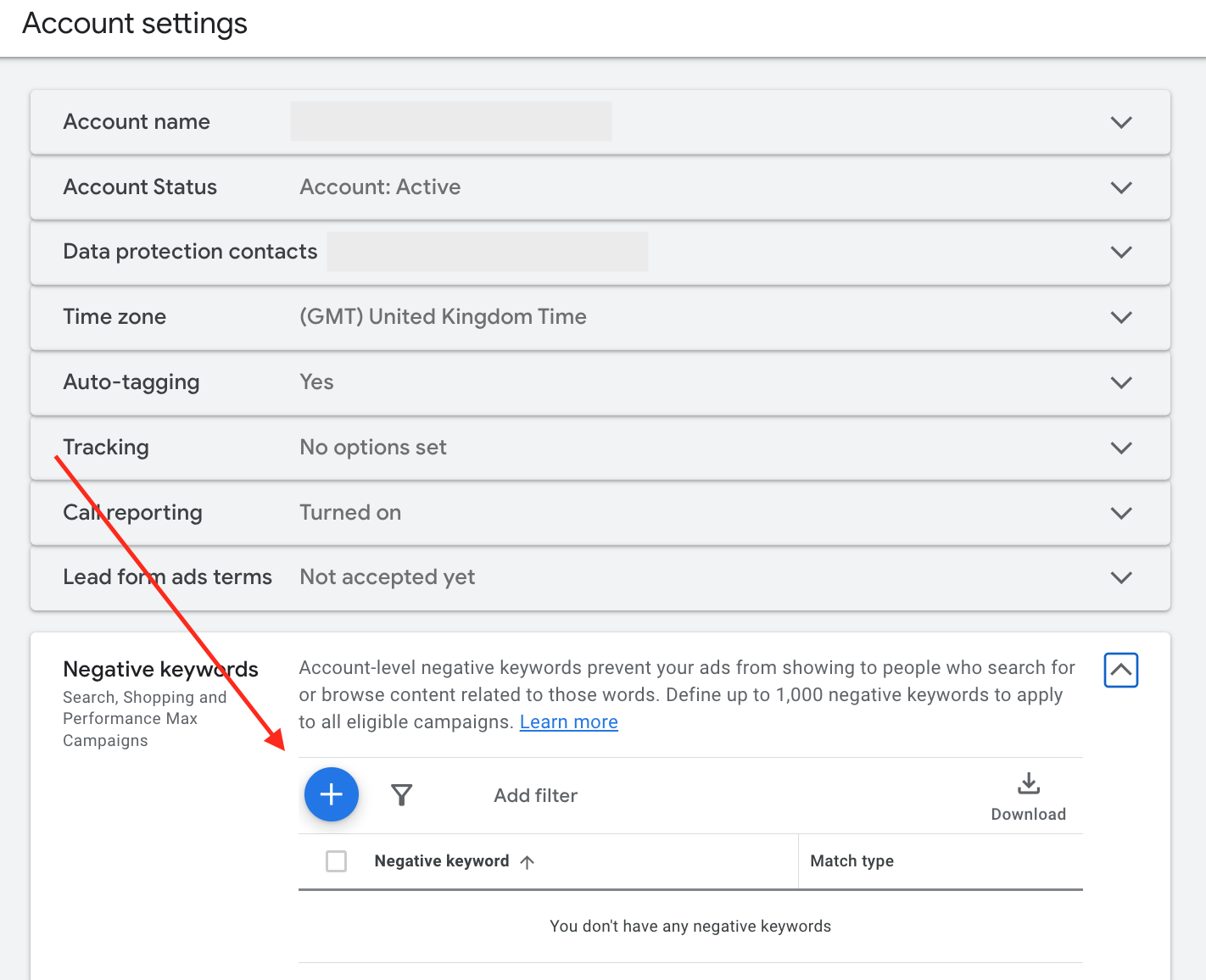
3. Run standard search brand campaigns - these specifically cover search keywords containing your brand. Be aware that if Google calculates the ad rank to be higher in PMax than your search ad campaign, PMax will steal this traffic. However, exact match targeting with well-optimised ad copy should see the bulk of brand traffic flow through here. You can control what you pay for it, see how much of it there is and get a clearer idea of sales performance for PMax going after new audiences rather than one that knows you.
Starting A Performance Max Campaign With Optimal Setup
With Google Performance Max's ability to cover all of Google's ad inventory from a single campaign, if used as intended, there would be little reason to run any other e-commerce campaign type. However, this isn't always the reality; sometimes, a different approach is needed.
In its simplest form, a setup would be PMax campaigns with adjustments applied to try and steer the machine where you want it to go. This could be to get new campaigns off the ground or to expand the reach of more established campaigns.
An alternative, though a more complicated setup, would be a hybrid approach, running Performance Max campaigns alongside Standard Shopping campaigns. This approach can reduce the risk when migrating to new PMax campaigns or make expansion easier while retaining some control. PMax can then fill in the gaps in standard campaign targeting while learning from the success of standard campaigns, accelerating its learning process.
If you are sensitive to which campaigns generate traffic and sales, PMax may steal traffic from your standard campaigns, as its targeting will likely overlap. It will come down to how Google views a particular search query and decides that the ad created by PMax is more appropriate to be served.
Below we will discuss a couple of options for choosing campaign types and structures to meet a specific need.
Performance Max Shopping Only
If you want as high a ROAS as quickly as possible for a new campaign, and your budget is limited, or you have been running PMax campaigns for a while, and they are not meeting your ROAS targets, then running a Shopping only PMax campaign would be something to try.
By only providing PMax with listing groups and no ad assets in an asset group, you will force PMax to serve only Shopping ads. For further information on diagnosing the impact of shopping ads in your PMax campaigns, and implementing a shopping-only configuration, read our post on Google Performance Max & Smart Shopping.
For larger catalogues, you can split out your campaigns based on your business goals for different categories as needed, as you'll still need to manage your budgets and bid strategies at a campaign level.
Standard Shopping & Performance Max Shopping Hybrid
A hybrid approach which again concentrates on Shopping Ads is a hybrid of Standard Shopping ad campaigns running alongside PMax. This could be a choice set up for if you have some problem products which don't perform well in PMax.
PMax can get stuck into a loop as it concentrates its effort on the top-selling products and achieves your goals with these alone. As a result, it avoids targeting products with lower conversion rates or an unproven history. In these situations, you may want to give these products a chance to flourish, so these could be excluded from PMax and placed within a standard shopping campaign where you can control bidding and maximise traffic. You can also see some of the search queries which trigger these product ads and establish if there are any issues with your feed content.
Conversely, some products may have a high burn rate of your budget yet are under your average ROAS targets, with the performance of much higher converting products inflating the average performance of a campaign which meets your target. Again placing them in a standard shopping campaign could reveal some clues as to what search queries are triggering your ads while having tighter control over the budget and bidding for these ads.
Search Ad Campaigns Alongside Performance Max
Sometimes PMax can remain heavily focussed on bottom-of-funnel traffic, much of which comes through Shopping ads, leaving little exploration of search ads or in some cases, too heavy a focus on keywords for your brand as opposed to higher funnel search keywords which aid discovery.
In these instances, Search Ad campaigns running alongside PMax are a great option. Below are some situations in which Search Ad campaigns would help you while running alongside PMax.
Increased control over brand traffic: You can choose the keywords you go for, how much budget you allocate and how much you bid on them. This is a primary option for brand keywords as if you want an ad presence for these, it's likely due to poor organic reach or overlap with your competitors trying to steal your brand traffic. In this case, you'll want to maximise your reach for these keywords.
Educate Performance Max: When you run search campaigns and generate sale conversions, PMax will see this data and, if it can, will use this within its campaign and scale into this traffic. By focusing on any data you have that offers high conversion rates, you can use this along with your intuition to apply search ad campaigns to increase your ad reach.
Cover The Holes In PMax Coverage: An example of this might be if your website content is poorly optimised or if there is a technical problem preventing Google from being able to crawl and read the content of your website. We've already discussed how this works, and in such cases, PMax can't pick out the keywords to establish what the target webpage is about. Therefore a standard search campaign would fill the gap in coverage of Performance Max, so it might be something to consider at the outset when beginning your journey into advertising with Performance Max or planning to bring them into play should the need arise.
Revisit Your Performance Max E-commerce Strategy Regularly
A key point to conclude this post is that your ads account is never finished. Even with an ideal strategy in place, with an optimised structure, there will be bumps in the road.
Remember that the advertising space is an ever-changing landscape. Competitors will constantly react to your presence, updating their strategies and introducing new products. So what might work for you initially may not work over the longer term.
Performance Max will also evolve with updates from Google, in addition to what it learns from your campaigns, as it is, after all, designed to explore new opportunities for sales across all of Google's inventory. So review your campaigns regularly, look at sales performance since the last change, and make sure your business objectives are met.
Get Clues From Performance Max Insights
The Insights tab within Performance Max is a great place to find inspiration for the evolution of your strategy. Under the consumer spotlight, you'll find the search term insights, which will give you an idea of the search queries leading to ad clicks and sales. These may lead to tests in search campaigns to further your reach.
Audience Insights data can also be used to roll out new asset groups with messaging tailored to suit these audiences. Additions you find here and adapt to your campaigns will increase your reach and educate PMax on where the sales are coming from, giving it further ideas to test and expand upon.
We have a section in another post which will help you Find New Opportunities In Performance Max Insights, which provides some examples of where to look. At times of upcoming traffic increases, perhaps with seasonal products approaching peak interest, insights will sometimes provide estimates of what to expect in the coming weeks, which will help you with budgeting in the weeks and months ahead.
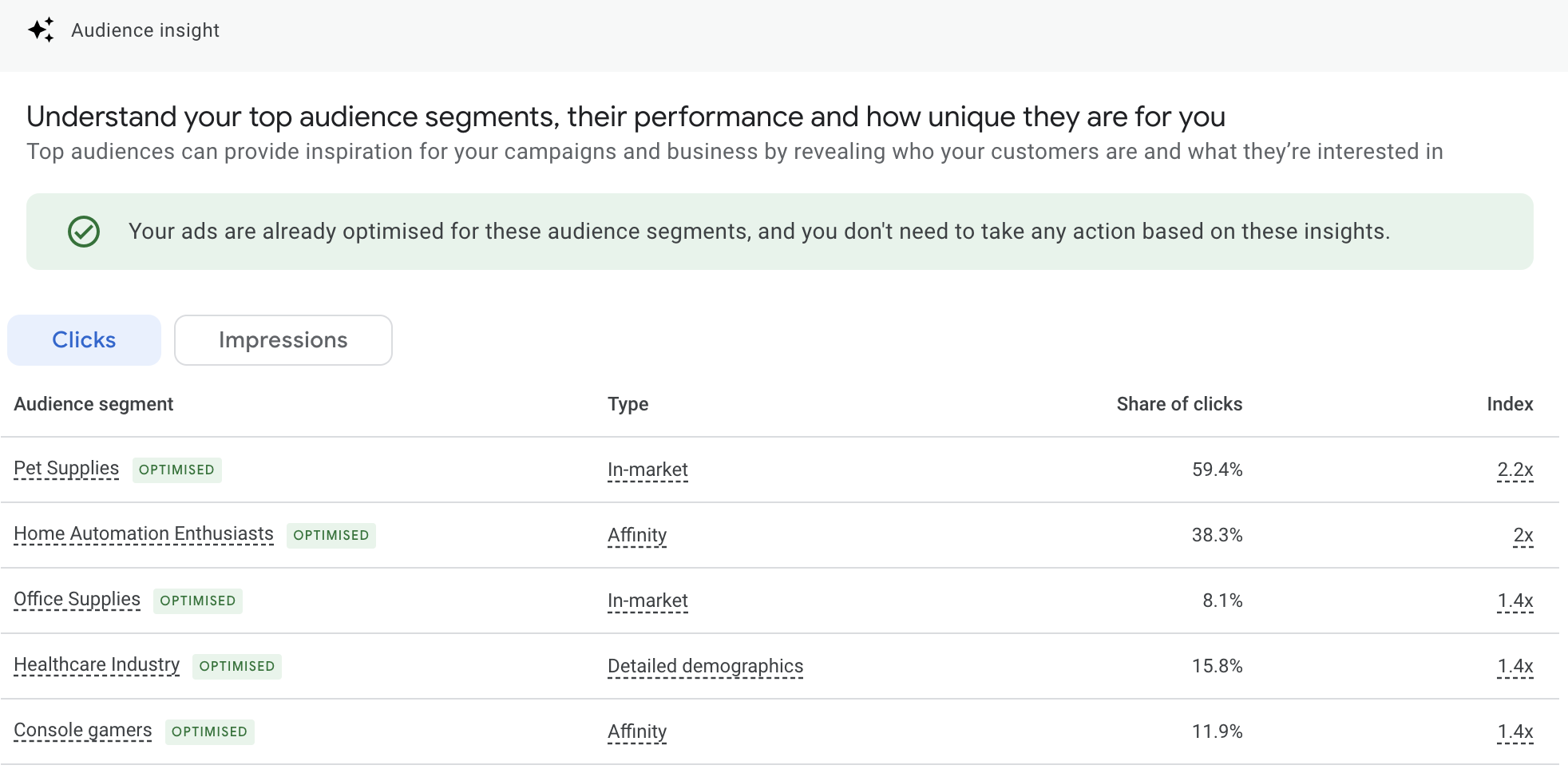 By checking PMax Insights regularly, you can keep an eye on what PMax is up to and spot any anomalies while also gaining inspiration for expansion ideas and planning for the future as opportunities arise.
By checking PMax Insights regularly, you can keep an eye on what PMax is up to and spot any anomalies while also gaining inspiration for expansion ideas and planning for the future as opportunities arise.
Get Help With Performance Max Ad Campaigns
Setting out a strategy for new Google Ad campaigns can be challenging and overwhelming. With so many options available, it can be difficult for advertisers to know where to start. While PMax offers one of the fastest routes to advertising a retail business online, setting it up to meet your business goals will be key to your overall success. However, partnering with marketing professionals in a Google Performance Max Ads agency can help you achieve your business objectives efficiently and effectively and help you scale up your reach to make the most of your pay-per-click advertising budget.
If you are right at the beginning of your PMax journey or perhaps have made a start and need assistance with getting more from it, we can help, get in touch.

Book A Discovery Call
Looking for tailor-made PPC strategies? Our team is here to help you maximize your online store's potential. Book a discovery call with us for personalised insights and solutions.
Book Your Free ConsultationBook Your Call